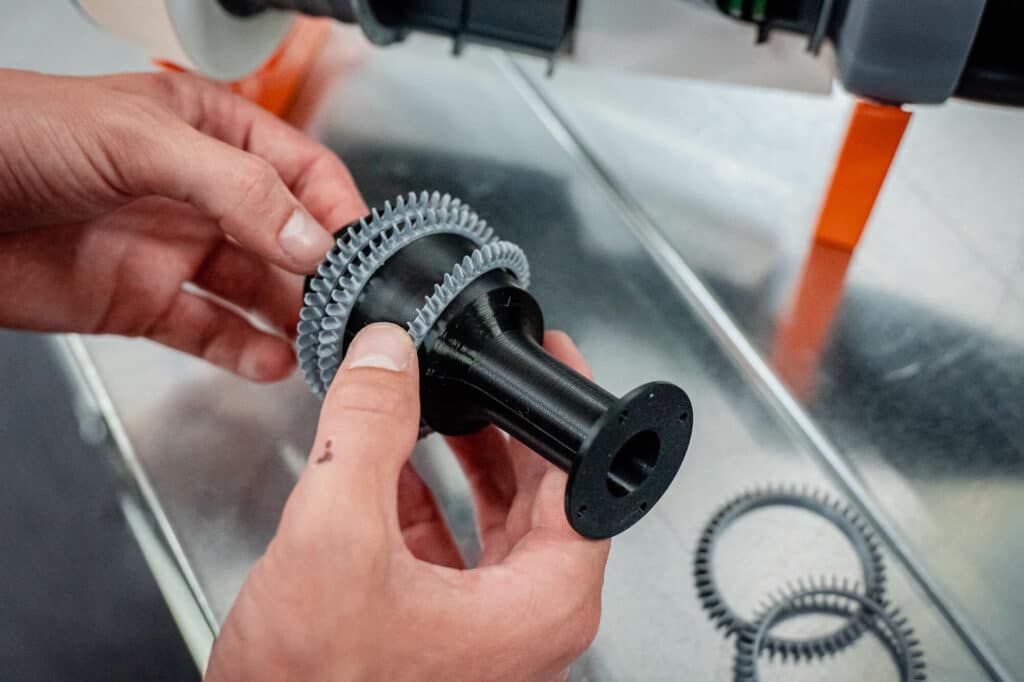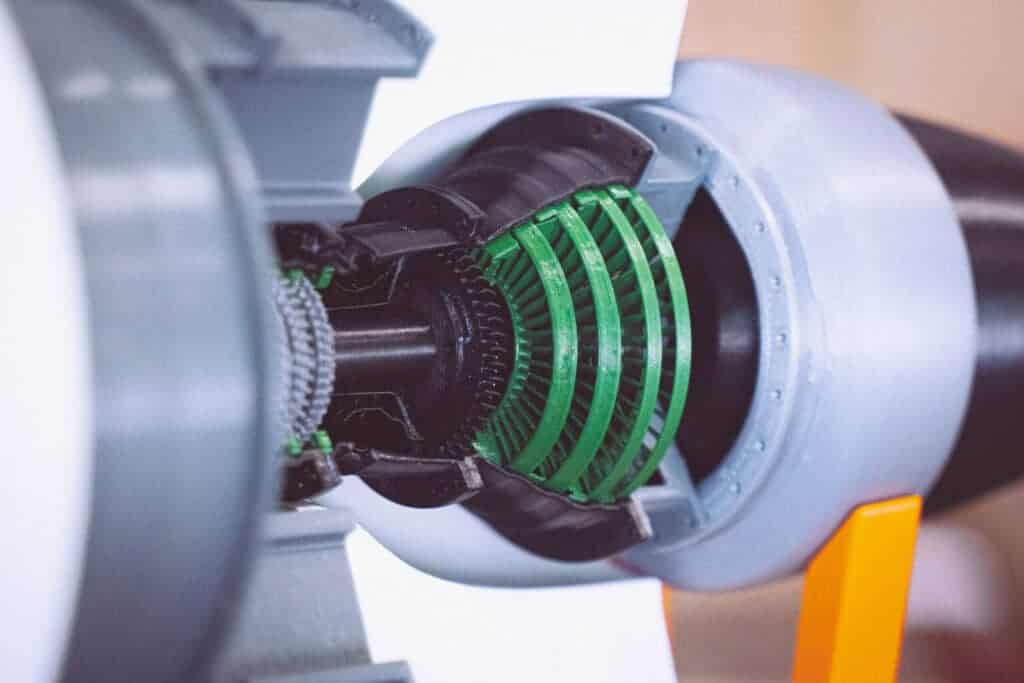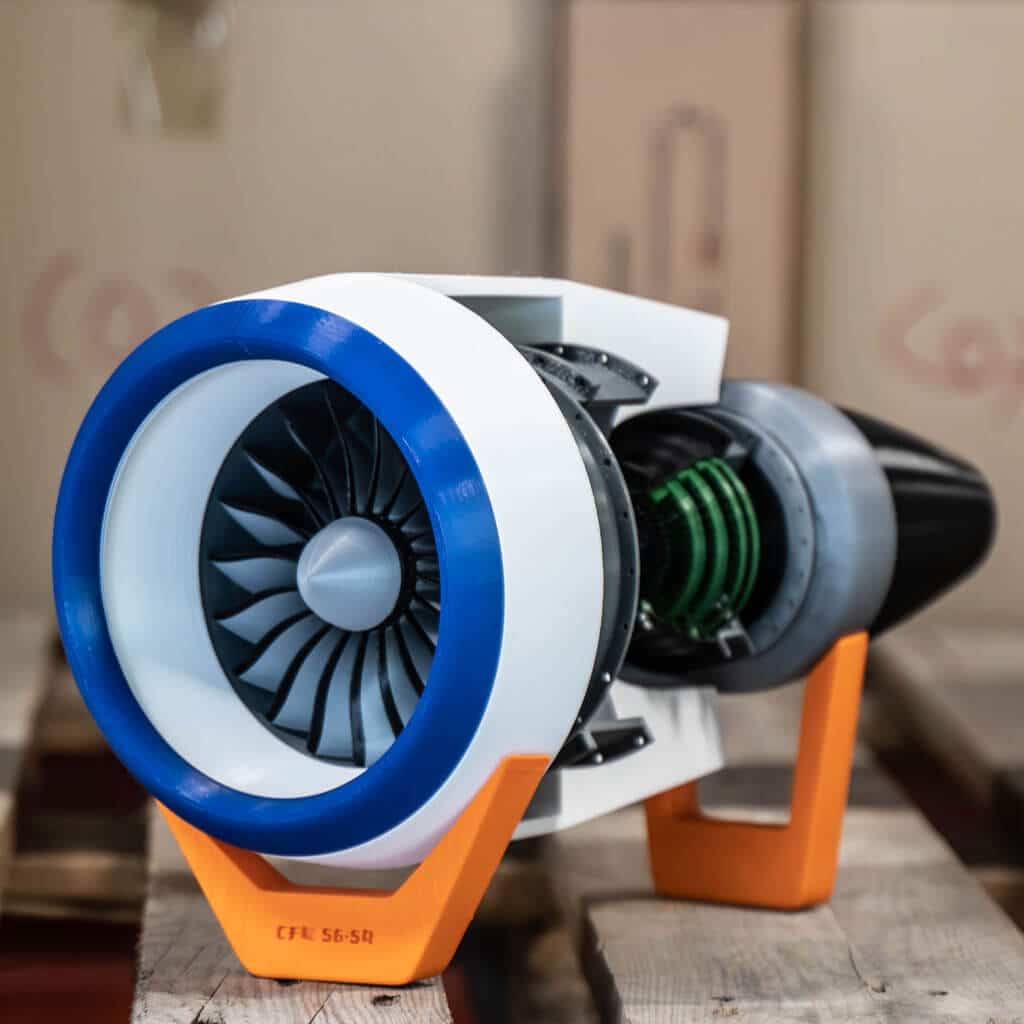In the always-evolving landscape of engineering, 3D printing has emerged as an absolute game changing technology, pushing the boundaries of what is possible in design and manufacturing. One area where its impact has been especially noteworthy is in the creation of complex mechanical parts. We’ve always wanted to have an example of this ourselves, and with our new High Precision PLA and PETG filaments, we thought it would be the perfect opportunity. This blog delves into the reasons we took to create this specific engine part composed entirely of 3D printed components, exploring the process and highlighting the rationale behind the choice of this specific filament.
Reliable printing
When pursuing exceptional print quality, many individuals often focus on two primary factors: the quality of the 3D printer itself and the quality of the material. However, there is another crucial aspect that plays a significant role in determining the overall print quality, and that is the consistency of the 3D print filament. While the printer and material are essential, the filament’s consistency is just as vital in achieving superior print results. Even with advanced printers and premium quality materials, 3D prints can still exhibit slight imperfections or inconsistencies. These imperfections can show as visible layer lines, irregular surfaces, or even dimensional inaccuracies. By prioritizing the use of a filament with a consistent diameter, these imperfections can be heavily minimized, resulting in much higher-quality prints.
The diameter consistency of the filament directly impacts the extrusion process during printing. If the filament has a consistent diameter, the extruder can maintain a steady flow rate, ensuring precise extrusion of material layer by layer. By reducing fluctuations in filament diameter, potential variations in extrusion and material deposition are minimized, leading to more reliable and visually appealing prints. Additionally, a consistent filament diameter enables better control over the printing process. It allows for more accurate calculations of filament usage, ensuring that the desired amount of material is extruded for each print. This level of control contributes to greater predictability in print outcomes, which makes it easier to achieve the desired results consistently. Therefore, when aiming for superior print quality, it is crucial to recognize the significance of filament consistency.
High precision filament doesn’t simply stop at ensuring the filament’s diameter, however, as it also extends to various other important aspects of filament quality. Alongside maintaining precise diameter measurements, High Precision filament also prioritizes consistent ovality, minimal shrinkage, and RAL color consistency. By maintaining this across these parameters, the filament guarantees “high precision” printing, allowing for remarkable detail and accuracy in printed objects. Furthermore, the filament’s low shrinkage properties contribute to excellent dimensional stability, minimizing the risk of warping or distortion during the printing process. This consistent material flow translates into smoother surfaces, improved layer adhesion, and enhanced overall print accuracy.
These filaments go the extra mile to provide transparency and traceability for the material. As each filament spool is equipped with a unique QR code on the package itself, which can be conveniently scanned to access precise information about that specific spool. This includes detailed data on the filament’s production batch, manufacturing parameters, quality control metrics, and even environmental conditions during the production. By offering such detailed traceability, it allows for full visibility into the filament’s origins and specifications, providing confidence and peace of mind in printing processes.


The printed parts themselves
Now, when it comes to our process for creating the engine parts, it’s worth noting that high precision PLA and PET filaments, although not specifically designed for extreme heat resistance like the materials used in actual engines, were chosen for this particular project due to their exceptional precision and reliability. Their distinct advantages in terms of precise 3D printing still made them a good fit in our eyes for this project. In particular, the teeth on the cogs would play a critical role in the proper functioning of the engine. These intricate components required very fine extrusion and reliable filament flow to ensure the precise and smooth operation of the entire mechanism. By utilizing the high precision PLA and PET filaments, we aimed to achieve the desired level of accuracy and consistency in the printed parts to really showcase what it can do. The inherent precision of these filaments allowed for intricate geometries, fine details, and excellent dimensional stability, ensuring that each tooth on the cogs was accurately reproduced with minimal deviations.
Furthermore, the use of high precision PLA and PET filaments not only offers excellent printability but also contributes to the overall efficiency of the production process. Their reliable extrusion properties and consistent filament diameter facilitated smoother printing operations, reducing the likelihood of errors or failed prints, and ultimately saving time and resources.
In summary, although high precision PLA and PET filaments may not possess the heat resistance required for actual engines, their outstanding precision and reliable extrusion capabilities made them the ideal choice projects such as this that showcase high accuracy requirements. By leveraging these filaments’ fine extrusion and reliable flow characteristics, we ensured the creation of said accurately printed parts. The emphasis on precision and quality, coupled with the efficiency gained during the printing process, contributed to the project’s overall success.


For the future
The successful integration of 3D printed components in things such as engine design opens up a world of possibilities for the future. As this technology continues to advance, we can anticipate even more intricate and resistant 3D printer parts usage. Apart from the intricacies that this filament offers for prints, we are also quite proud of the pristine surface finish these filaments offer to unprocessed prints. We hope this article can motivate and inspire some who are looking to take their 3D print journey to the next level, and equally are as excited to see what our community comes up with for these filaments! This model was created by CharlyA on Printables. Do be sure to give him the support he deserves, as we are very thankful for this beautifully made project by him!

